
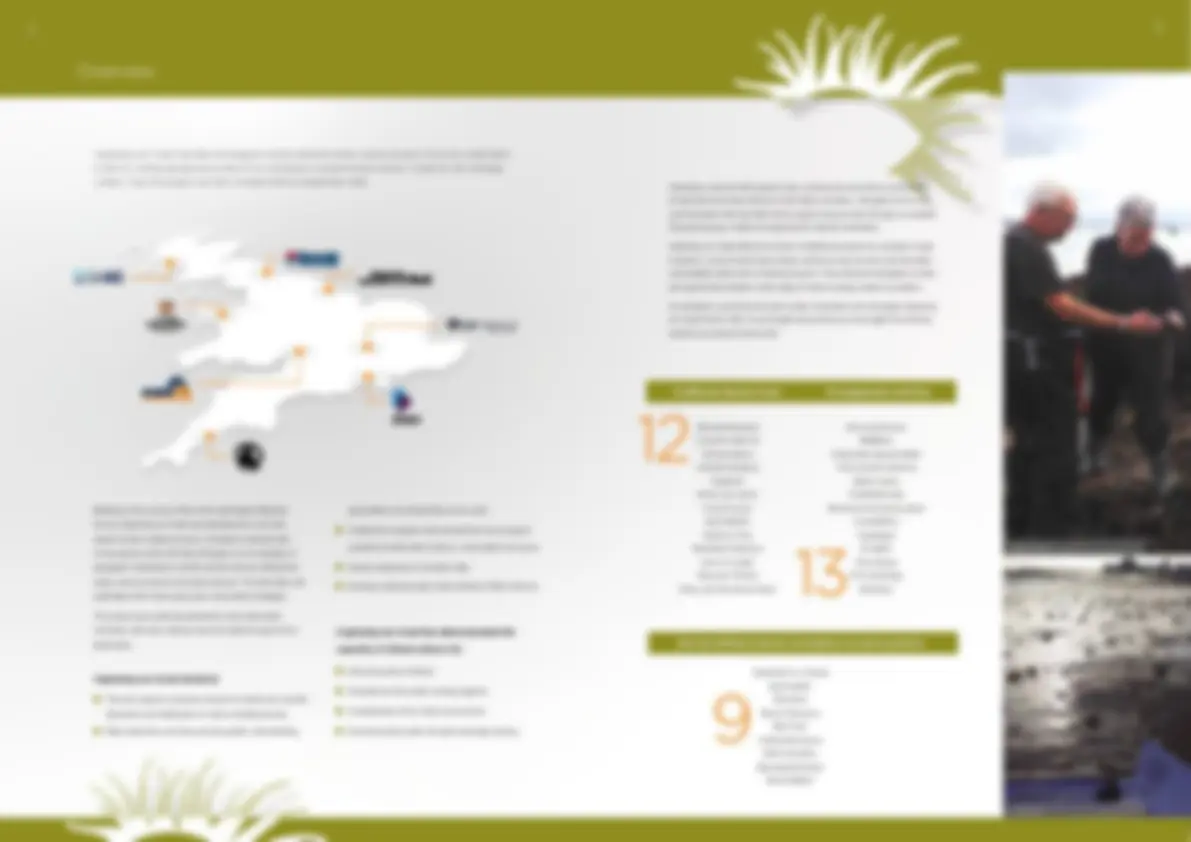
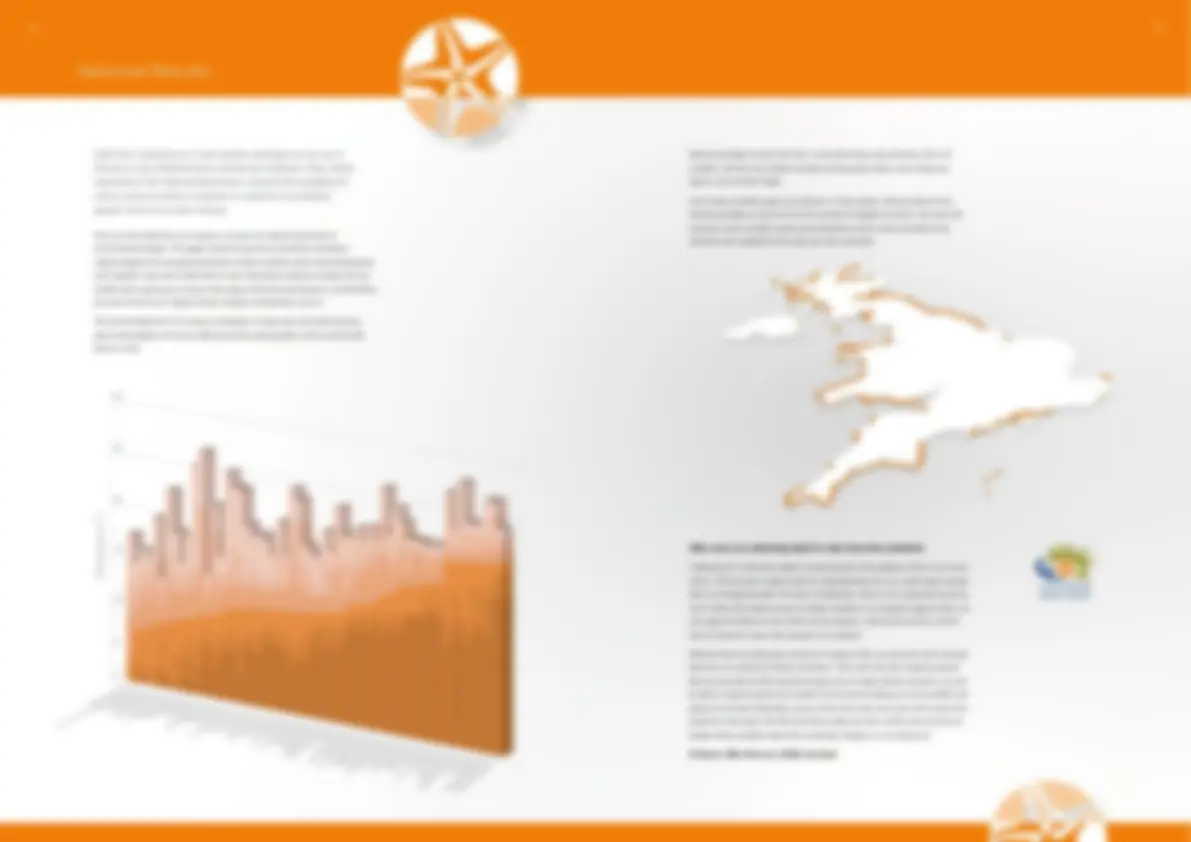
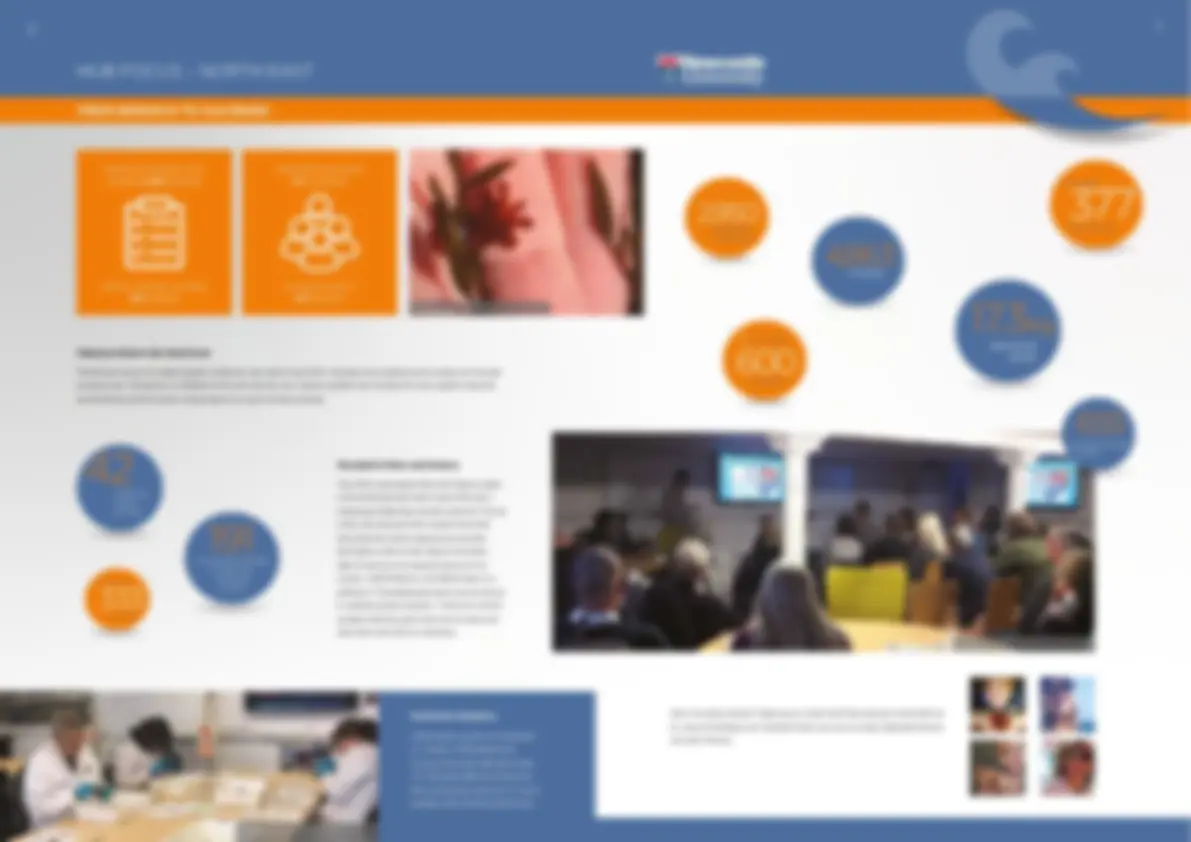
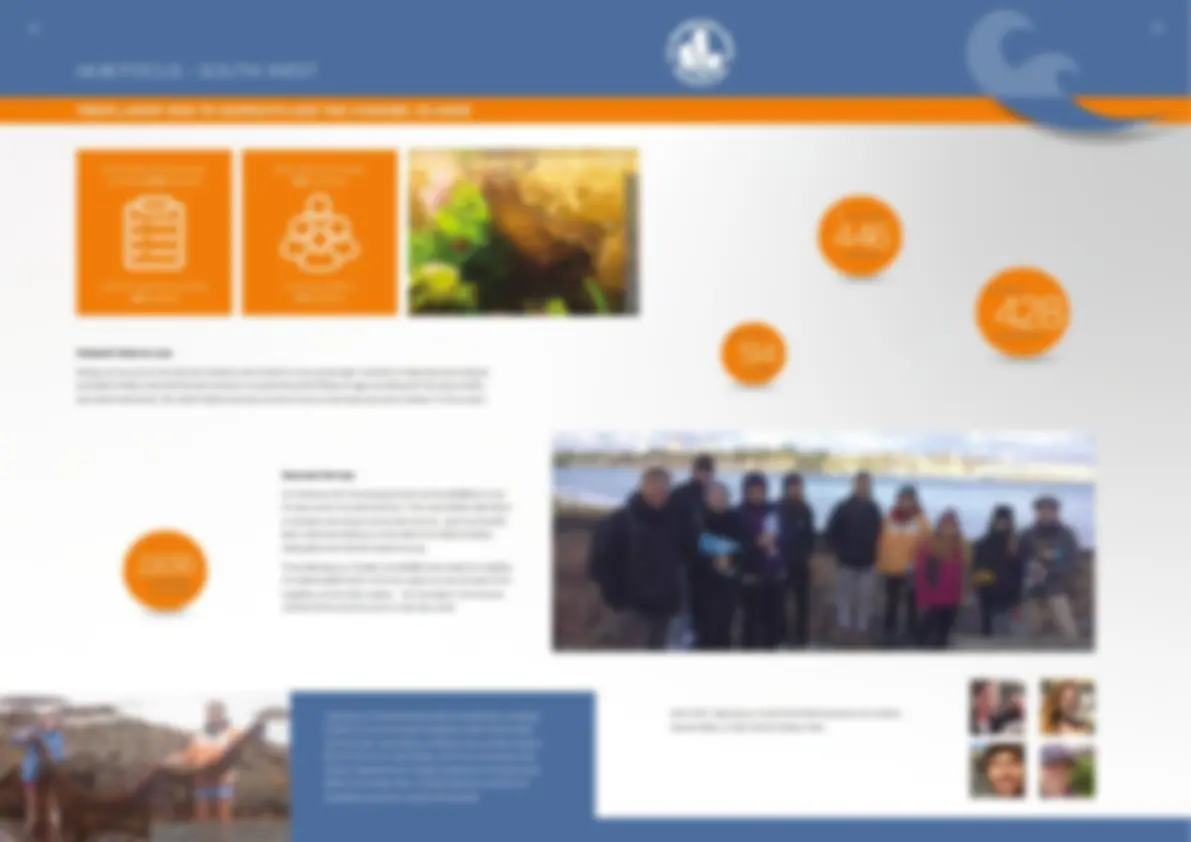
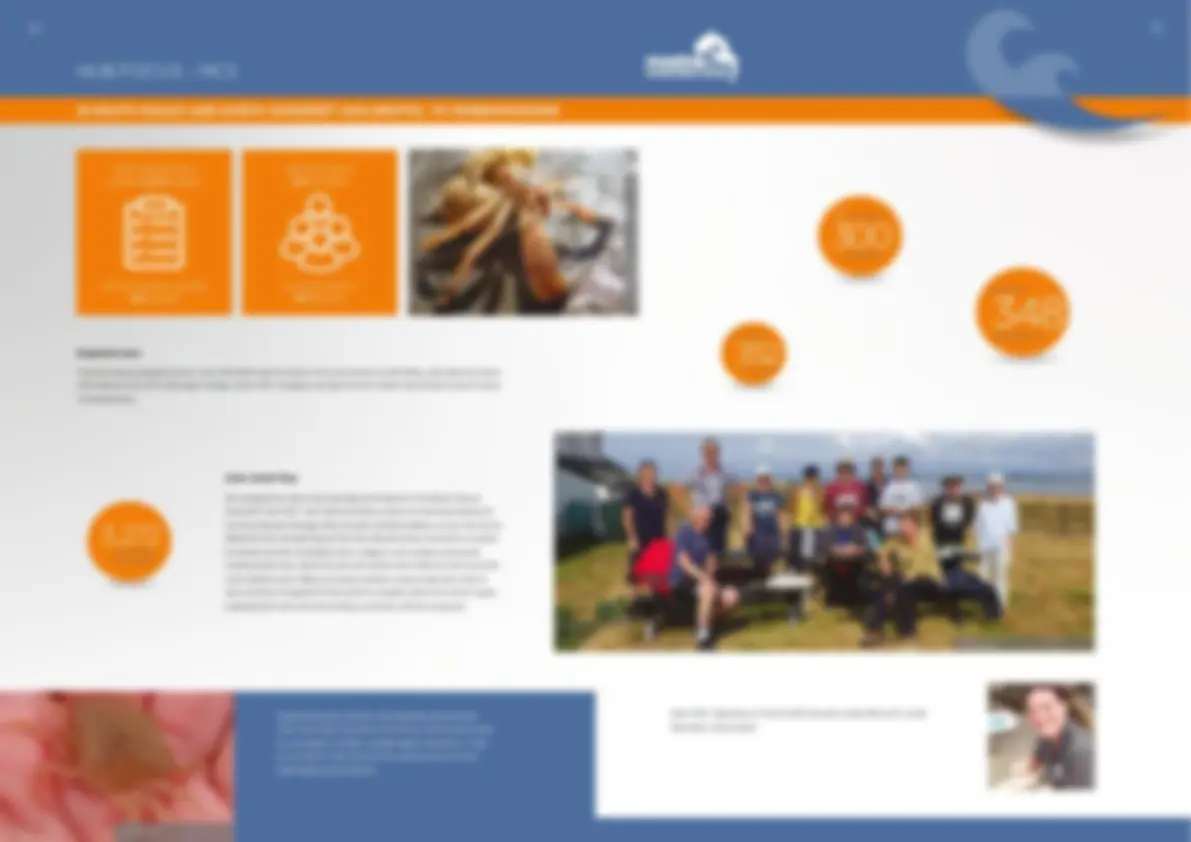
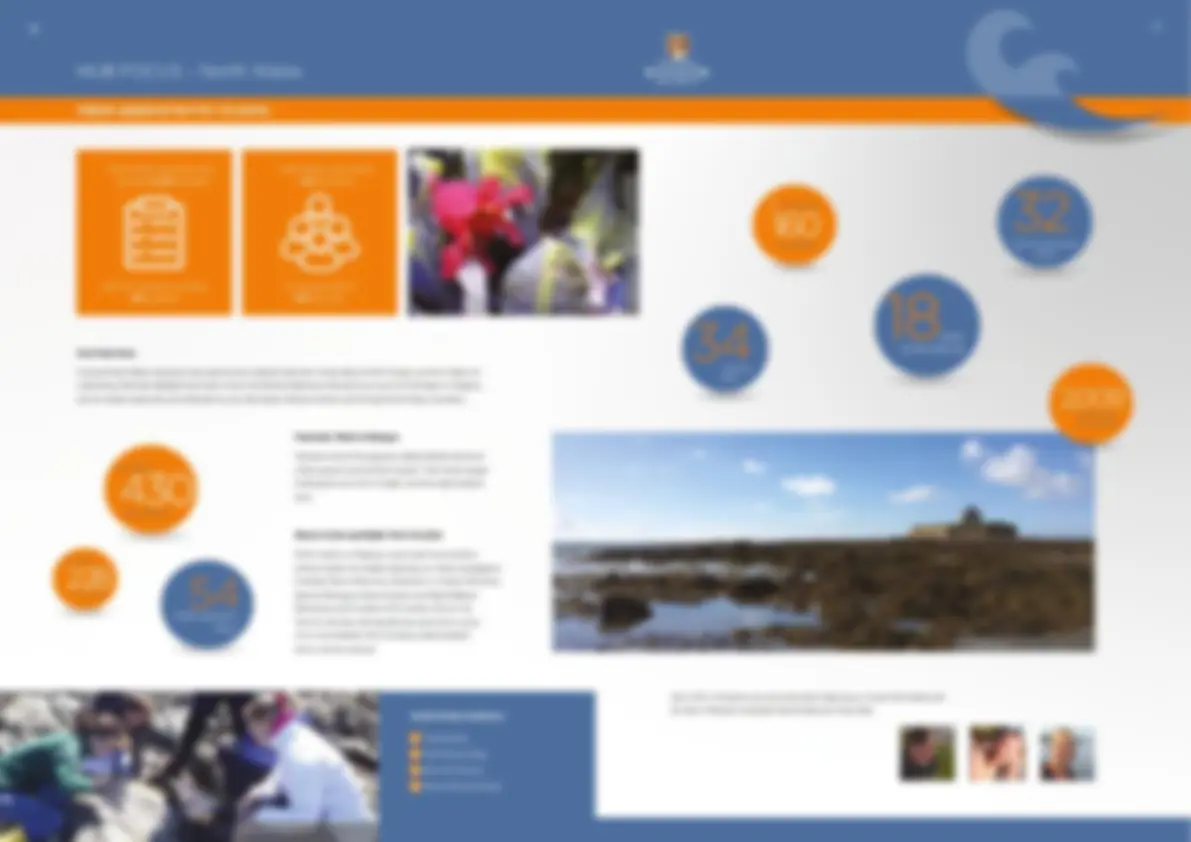
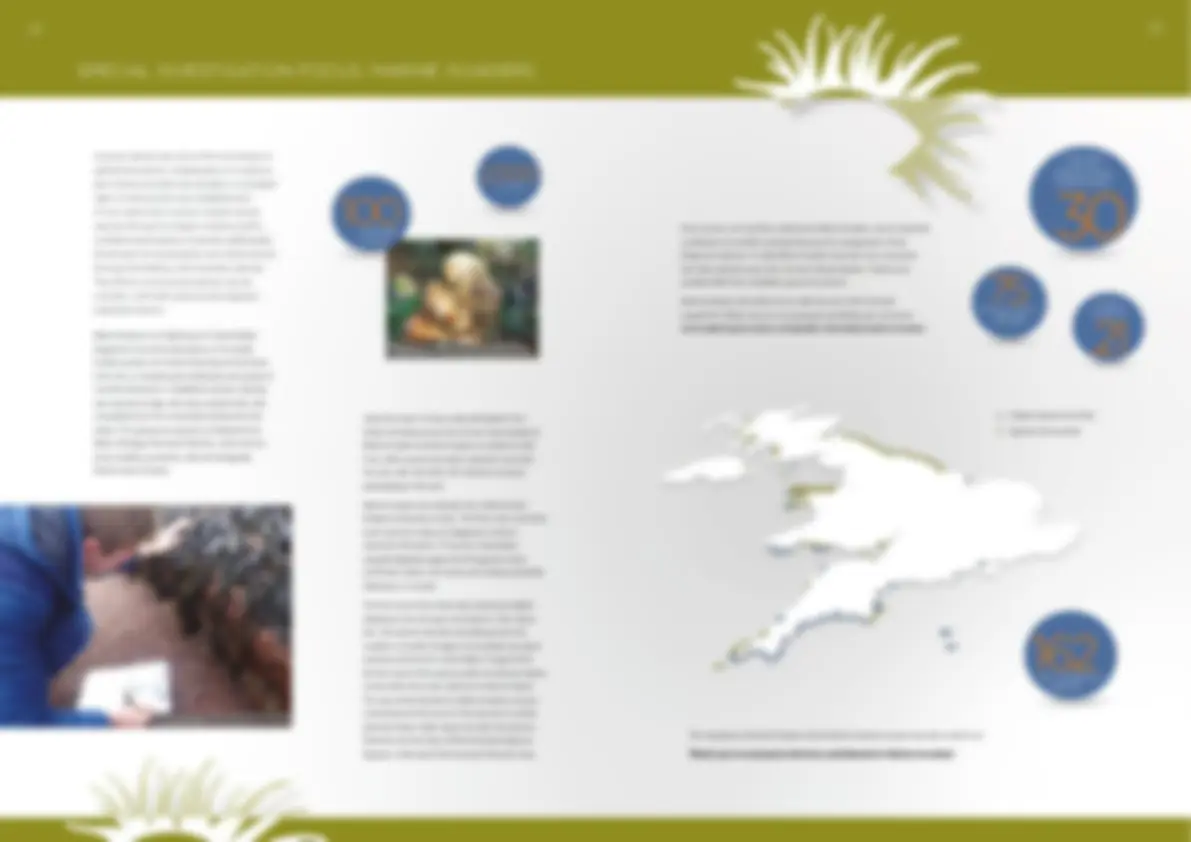
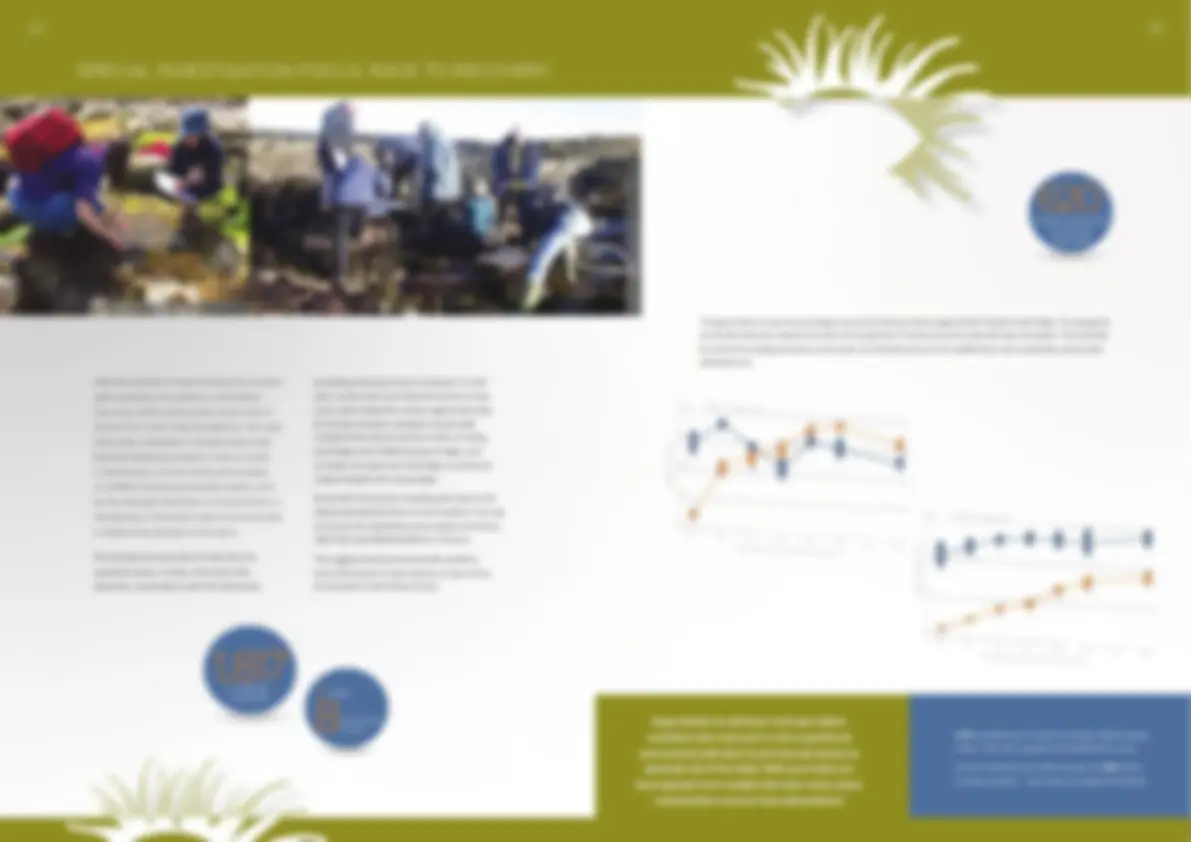
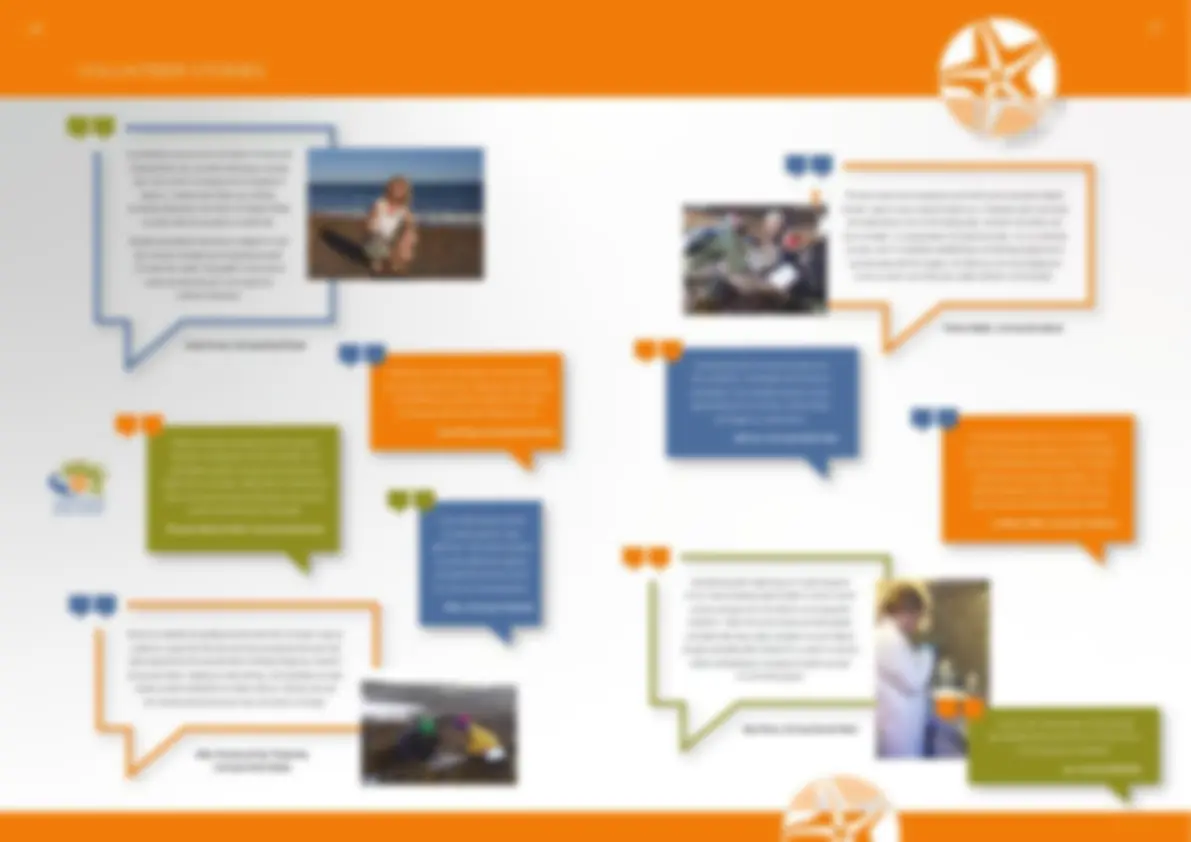
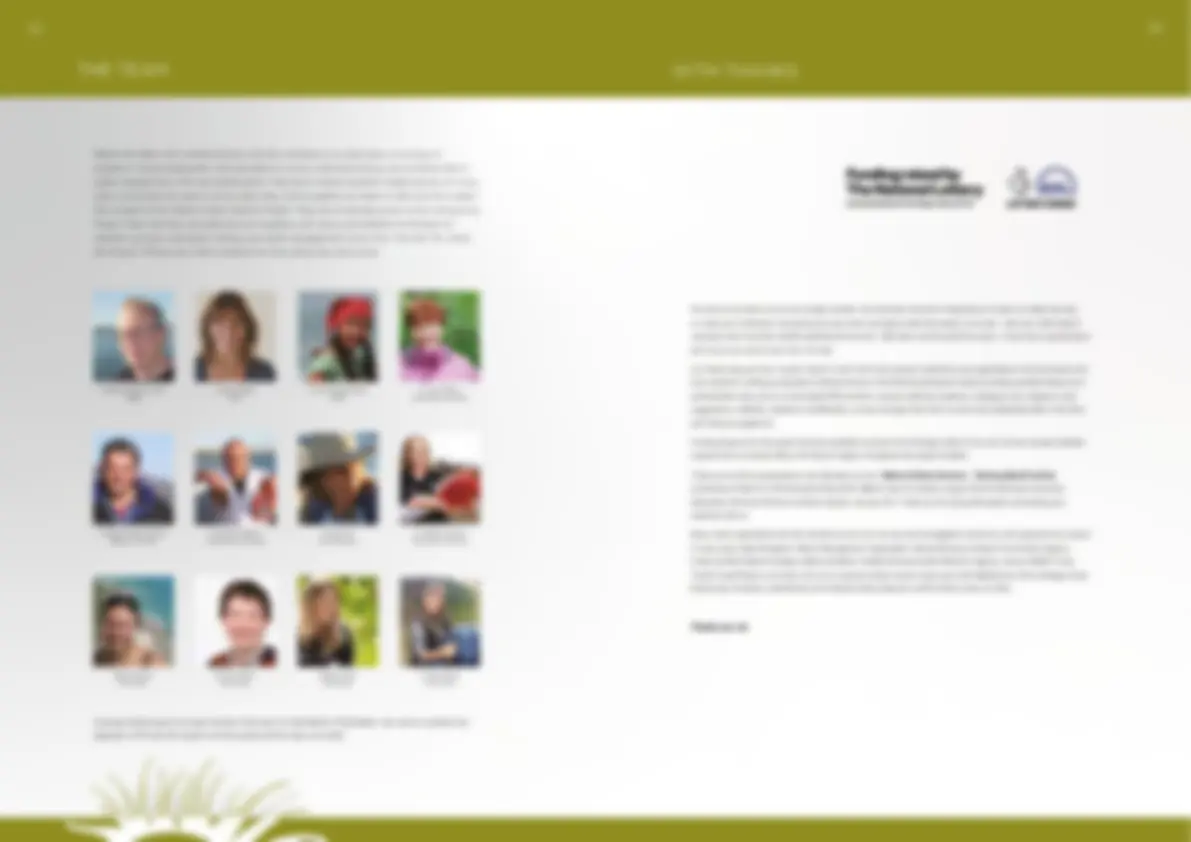
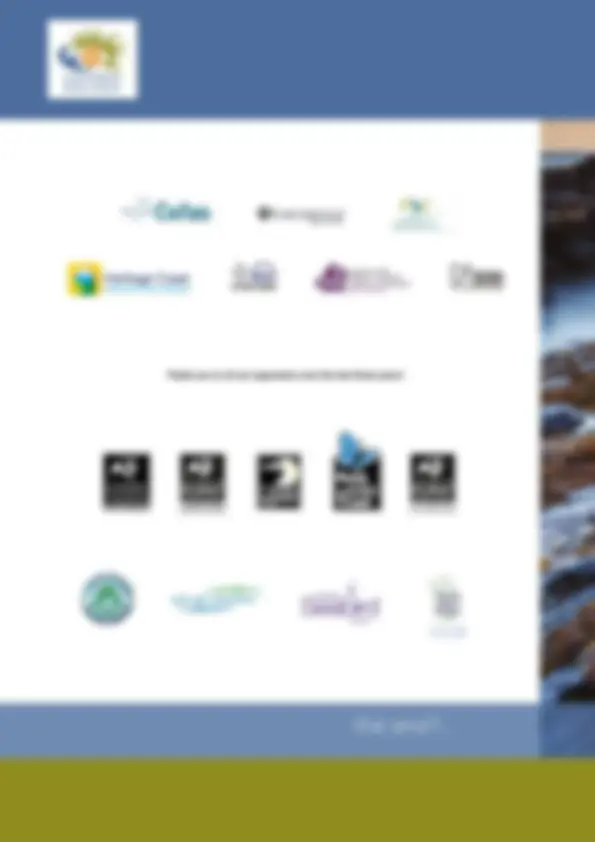


Study with the several resources on Docsity

Earn points by helping other students or get them with a premium plan


Prepare for your exams
Study with the several resources on Docsity

Earn points to download
Earn points by helping other students or get them with a premium plan
Community
Ask the community for help and clear up your study doubts
Discover the best universities in your country according to Docsity users
Free resources
Download our free guides on studying techniques, anxiety management strategies, and thesis advice from Docsity tutors
Capturing Our Coast is the biggest marine intertidal citizen science project in the UK, inviting people across the country to contribute to experimental science. The project aimed to train coastal surveyors, collect data on key species, and fill gaps in knowledge of geographic distributions, range-shifting species, and invasive species. Volunteers collected data on various marine intertidal species, and the project resulted in training over 2,800 volunteers in scientific survey techniques.
What you will learn
Typology: Lecture notes
1 / 19

This page cannot be seen from the preview
Don't miss anything!












Capturing Our Coast
Contents
Foreword
“We have come to the end of Capturing our Coast and what a journey it has been. We have made new friends, and explored new parts of our coastline. Both scientists and volunteers have challenged themselves and pushed the boundaries of what it is to do science, together, working in new ways. Marine citizen science is one way we can share the responsibility of making a difference and work towards healthier, biologically diverse seas. Our power lies in our numbers and co-operative working in a systematic way. Each Capturing our Coast member who took a record or a measurement has helped build up to an impressive wealth of information. Never underestimate the importance and value of your contribution. The information you have shared is being put to use right now, and will remain available for use by scientists, conservation groups and environmental consultants for decades to come. Coming together and collecting data systematically is a powerful tool that aids our understanding of species’ responses to environmental change, the ways in which coasts are impacted, and when recovery occurs. One goal for Capturing our Coast was to explore the degree to which you, the great UK public, wanted to participate in scientific research. The research and learning, for both volunteer and professional scientist, centred on finding out what worked. You have astounded us in your perseverance, your skilled eye, and your willingness to share and engage. Your questioning of how we work as professional scientists has made us reflect and be more critical of what we do. The potential of marine citizen science is enormous, but for it to be most influential moving forward, the challenges of working in this way together must be acknowledged. So, not only have you added to knowledge of distribution and ecology of marine species, but you have extended understanding of how marine scientists and marine citizen scientists can best work together. It is our hope that marine citizen science will become accepted by the professional scientific community, decision makers, policy makers and governments as ‘the norm’ - a usual and legitimate way of investigating and building knowledge. If this is achieved, what we can accomplish together is unlimited. Seeing what we have achieved here together in Capturing our Coast awakens great optimism for the future of marine conservation and for our fantastic UK seas. Our data will enter the pool of evidence that is used to leverage support and political change for environmental benefit.”
“Never underestimate the importance and value of your contribution.”
Dr Jane Delany Director of the Dove Marine Laboratory, Newcastle University
One use of the data from your species’ surveys is to explore responses to environmental change. This graph shows the species recorded by volunteers, mapped against the average temperature at those locations and at what temperature each organism was found (within their known temperature tolerance range). We can identify which species are closest to the edge of their thermal tolerance, and therefore are most at risk if a 0.5 degree Celsius change in temperature occurs. This demonstrates the UK’s unique combination of warm and cold water species, which exist together due to our latitude and the warming effect of the currents that feed our seas.
National Results
Species package surveys have been conducted along most stretches of the UK coastline, with the only notable exceptions being areas where rocky shores are sparse, such as East Anglia. Over twenty scientific papers are planned or being written utilising data from the species package surveys and from the special investigation projects. We hope that numerous other scientific studies and publications will be made possible by the existence and availability of the data you have collected!
“Capturing our Coast has created a unique picture of the patterns of life on our rocky shores. This has been hugely useful for understanding how our coasts might change with our changing climate in the face of heatwaves, storms, and a generally warming world. Where the data becomes incredibly valuable is as a baseline against which we can judge the effects of such events as they happen. Has the hot summer of 2018 had an impact on rocky shore species, for example? While the first CoCoast project will end in October 2018, we welcome more CoCoast data from our network of trained volunteers. There will not be the ongoing support that we were able to offer during the project but, as highly trained surveyors, you will be able to upload results to the website for the period leading up to the possible next phase of CoCoast. Practically, surveys of the same sites every year at the same time would be most useful. We will review these data every few months and use them to answer those questions about the continuing changes on our seashores.” Professor Mike Burrows, SAMS, Scotland
The first ever record of a stalked jellyfish at Boulmer was made in April 2016. Volunteers also spotted sperm puddles at Cresswell as well as over 120 species on a Bioblitz at the same site this June. Species spotted here included the worm pipefish ( Nerophis lumbriciformis ) and the invasive orange-tipped sea squirt ( Corella eumyota ).
4,863 limpets counted, for Seaweeds vs. Limpets, 42 Breeding frenzy surveys, 655 people attended events, 191 individuals attended at least one Wine and Science event and 17.3 kg of seaweed dried for Race to Recovery!
4,
2,
42 breeding frenzy surveys
17 .3kg seaweed dried
191 individuals attended at least one Wine and Science
655 people attended events
377
333 transects
surveying
1 volunteer
600
© Charlotte Foster
© Stephanie Dickens
Co Coast North East
Two of the most popular Wine and Science nights in the North East were held in early 2018 with a whopping 38 attendees at both events! Dr Thomas Linley, who was part of the research team that discovered the world’s deepest recorded fish, fascinated us with his talk ‘Deeper than Deep: tales of science in the deepest reaches of our oceans’, whilst Professor John Bythell gave us a plethora of ‘Fascinating facts about sea anemones to entertain people at parties’. Thank you to all the speakers that have given their time to inspire and share their work with our volunteers.
FROM BERWICK TO SALTBURN
HUB FOCUS - NORTH EAST
North East volunteers have surveyed 2,950 quadrats
with one volunteer surveying 600 quadrats
North East have trained 377 volunteers
surveying a total of 333 transects
Since the project started, Capturing our Coast North East has been looked after by Dr. Jacqui Pocklington and Charlotte Foster, and more recently, Stephanie Dickens and Jade Chenery.
In August 2017 we took a group of 10 volunteers out on a boat in Langstone Harbour and onto the research pontoon. We had our eyes peeled and were lucky enough to see two local harbour seals, as well as a lot of marine life on the pontoon itself, including some blue velvet swimming crabs.
24 Training Days 83 Field Support Days 15 Wine and Science 2 Film Screenings 3 Beach Cleans!
83
2,
24 training days
(^15) wine and science
3
film^2 screenings
437
259 quadrats
surveying
1 volunteer
747
© Cathy Corrie
© Paul Naylor
Portsmouth Team
In early 2018, Portsmouth volunteers started to survey a rocky headland site that is part of Beachy Head East. It is a 193 km^2 area of shore stretching from Beachy Head Cliffs to Hastings Pier and is being considered for Marine Conservation Zone status. This site is included in proposals to create a “blue belt” of protected areas around the British Isles. All data collected here are being given to the decision making bodies for this proposal, further contributing to marine conservation in the UK. We have found lots of amazing marine life here from topshells and periwinkles to snakelocks and beadlet anemones, even a strawberry anemone too!
FROM DORSET TO BRIGHTON
HUB FOCUS - SOUTH EAST
South East volunteers have surveyed 2,090 quadrats
with one volunteer surveying 747 quadrats
South East have trained 437 volunteers
surveying a total of 259 quadrats
Since the project started in 2015, the South East hub has been looked after by two Project Officers: Abbi Scott and Sarah Long and two Research Assistants: Zoe Morrall and Katrin Bohn.
During a survey at Looe, the team and volunteers were treated to a very special sight: hundreds of mating Sea Hares (Aplysia punctata) in shallow pools that had been exposed on a great spring tide! Strings of eggs resembling pink silly string noodles were strewn everywhere. We couldn’t believe how lucky we were to see so many large specimens, between 15-20 cm each!
Capturing our Coast Southwest citizen scientists have completed quadrat surveys and special investigations within Skerries Bank and Surrounds, Tamar Estuary, Whitsand and Looe Bay, Padstow Bay and Surrounds, Mounts Bay, Land’s End, Newquay and the Gannel, Hartland Point to Tintagel and Bideford to Foreland Point Marine Conservation Sites. CoCoast staff were involved in the designation process for several of these MCZs.
2,
428
514 quadrats
surveying
1 volunteer
446
© Kathryn Pack
© Barry Pettifor
© Leoni Adams
For Christmas 2017, the Southwest team ran three BioBlitzes in just five days across Cornwall and Devon. There was fantastic attendance of volunteers who all got involved with some fun ‘search and identify’ tasks, whilst also helping us record data for the Marine Invaders, Wading Birds and General Quadrat surveys. Those attending our Trevellas Cove BioBlitz were treated to a sighting of a stalked jellyfish! Each event was a great success and loads of fun regardless of some bitter weather… hot chocolates in the local pub certainly hit the spot at the end of a hard day’s work!
FROM LANDS’ END TO SIDMOUTH AND THE CHANNEL ISLANDS
HUB FOCUS - SOUTH WEST
South West volunteers have surveyed 2,836 quadrats
with one volunteer surveying 446 quadrats
South West have trained 428 volunteers
surveying a total of 514 quadrats
Since 2015, Capturing our Coast South West have been Leoni Adams, Hannah Wilson, Dr Ben Holt and Kathryn Pack.
CoCoast North Wales volunteers have explored and collected data from Cemlyn Bay to Porth Cwyfan, and from Talacre to Llanbedrog. Particular highlights have been a trip to the Skerries lighthouse followed by surveys at The Range on Anglesey, and our plastic awareness event attended by over 300 people. Massive thanks to all CoCoast North Wales volunteers.
54
2,
34 training days
(^18) wine and science
32
430
228 transects
surveying
1 volunteer
160
Stalked Jellyfish
CoCoast North Wales
CoCoast North Wales
34 Training Days 54 Field Support Days 18 Wine and Science 32 Race to Recovery Days
Volunteers found this gorgeous stalked jellyfish (above) at a field support event at Porth Cwyfan. Their funnel-shaped bodies grow up to 5cm in height, and have eight webbed arms.
Porth Cwyfan on Anglesey’s west coast has provided a perfect location for multiple Capturing our Coast investigations including: Race to Recovery, Seaweed vs. Limpets, Microlives, Species Packages, Marine Invaders and Beach Babies! Renowned as the location of St Cwyfan’s Church, the Church in the Sea, this beautiful bay was home to some of our most fantastic finds including a stalked jellyfish and a common octopus!
FROM ABERYSTWYTH TO RHYL
HUB FOCUS - North Wales
North Wales volunteers have surveyed 2,009 quadrats
with one volunteer surveying 160 quadrats
North Wales have trained 430 volunteers
surveying a total of 228 transects
Since 2015, Dr Siobhan Vye has looked after Capturing our Coast North Wales with the help of Research Assistants Hannah Earp and Vicky West.
With over 20 events throughout the years, the Wine and Science series has been a great success, and enjoyed by hundreds of volunteers all over Scotland (and the world!) due to the live-streaming of the talks. Together, we’ve seen penguins in the Antarctic, watched marine mammal autopsies and discovered what barnacles can tell us about climate change. Thanks to all our inspiring speakers, and everyone who came along.
Capturing our Coast Scotland has been a fantastic example of partnership working, with support from organisations such as the Hebridean Whale and Dolphin Trust, Scottish Wildlife Trust, RSPB, Scottish Seabird Centre, local coastal partnerships and more community groups than it is possible to name here.
3,
580
397 transects
surveying
1 volunteer
600
CoCoast SAMS
CoCoast SAMS
CoCoast SAMS
Capturing our Coast has been a success due to the drive, enthusiasm and good humour of all the volunteers in Scotland. They have walked, climbed, driven, canoed and sailed to shores all across Scotland, in blazing sun and driving rain, all in the name of science. Particular highlights shared by some volunteers include finding sunstars on a cloudy west coast day, discovering Oban Bay is secretly full of painted topshells, and getting a view into the hidden squishy world of jellyfish, worms, bryozoans and sea slugs during kelp surveys!
FROM BENBECULA TO EDINBURGH
HUB FOCUS - Scotland
Scotland volunteers have surveyed 3,413 quadrats
with one volunteer surveying 600 quadrats
Scotland have trained 580 volunteers
surveying a total of 397 transects
Hebridean Whale & Dolphin Trust
Since 2015, Dr Hannah Grist has worked on Capturing our Coast Scotland with the help of Research Assistant Peter Lamont, as well as interns Shannon Lafferty and Blair Watson.
SPECIAL INVESTIGATION FOCUS: MARINE INVADERS
162
2, records
100
Crassostrea angulata/ Magallana gigas, Portuguese Oyster & Pacific Oyster
30
pinnatifida^ Undaria (Wakeame)
21
Sargassum muticum,(Japenese Wireweed)
75
© Keith Hiscock
Marine Invaders is a Capturing our Coast initiative designed to record the abundance of 16 coastal invasive species, for Horizon Scanning (not yet found in the UK), or monitoring the distribution and spread of currently introduced or established species. Species were selected to align with policy requirements, with consultation from UK conservation bodies from the outset. The species surveyed are of interest for the Marine Strategy Framework Directive, which aims to ensure healthy, productive, safe and biologically diverse seas in Europe.
Using the power of mass-scale participation from Citizen Scientists around the UK and Channel Islands, Marine Invaders has been hugely successful to date. Over 2,000 records have been collected in less than one year, with more than 100 volunteer surveyors participating in this work. Marine Invaders has collected 162 confirmed Non Indigenous Species records. The three most commonly found species to date are Sargassum muticum (Japanese Wireweed): 75 records, Crassostrea angulata/Magallana gigas (the Portuguese Oyster and Pacific Oyster): 30 records and Undaria pinnatifida (Wakame): 21 records. The first record of the Asian kelp Undaria pinnatifida (Wakame) in the UK was in the Solent in 1994. Since then, this species has been spreading around the coastline of southern England. During Marine Invaders searches performed in south Wales in August 2018, the first record of this species within the Skomer Marine Conservation Zone was collected on Skomer Island. This was shortly followed by Marine Invaders surveys contributing the first record of this species on nearby Skokholm Island. Both islands fall within the Skomer, Skokholm and the Seas off Pembrokeshire/Sgomer, Sgogwm a Moroedd Penfro Special Protection Area.
New records, such as those collected by Marine Invaders, are an important contribution to scientific understanding and the management of Non Indigenous Species. To date Marine Invaders has been very successful, with data collected around the UK and Channel Islands. Thanks to an excellent effort from a fantastic group of surveyors. Marine Invaders will continue to run after the end of the CoCoast programme. Please carry on surveying and submitting your records to www.capturingourcoast.co.uk/specific-information/marine-invaders
Invasive species recorded Species not recorded
The map above shows all locations where Marine Invaders surveys have been carried out.
CoCoast South West
0 (^3 6 9 ) (^15 18 21 )
25
50
75
100
0
25
50
75
Number of months after disturbance
a) Brown algae cover
Mean % Cover
0 (^3 6 9 12 ) (^18 21 )
20
40
60
0 (^3 )
20
40
Number of months after disturbance
b) Brown algae cover
Mean Length (cm)
SPECIAL INVESTIGATION FOCUS: RACE TO RECOVERY
1,
1,817 quadrats were surveyed over 2 years at 8 monitoring events - that is the equivalent of almost 2 tennis courts. CoCoast volunteers and staff measured over 620 metres of canopy seaweed – that is twice the height of the Shard!
The figures below shows the percentage cover (a) and size (b) of brown algae at Porth Cwyfan, North Wales. The orange line are the sites that were cleared at the start of the experiment. The blue line are the sites that were not cleared. The horizontal line shows the average abundance across sites, the vertical lines how much variation there was in abundance across sites (standard error).
620
(^2) years
8
monitoring events
Five CoCoast hubs around the UK took part in an experiment across 14 shores. At the start of the experiment, we simulated a storm-like disturbance,
by clearing small sites of shore of seaweed. On each shore, we also had a set of sites that we did not clear, so we could compare the recovery against these sites. 63 CoCoast volunteers, alongside CoCoast staff, monitored these sites every three months, recording percentage cover of different groups of algae, such as canopy, turf, green and fucoid algae, as well as the maximum length of the canopy algae. We are still in the process of analysing the data, but the initial results that show there is a lot of variation in the rate of recovery from disturbance across regions and shores, rather than clear latitudinal patterns in recovery. This suggests that local environmental conditions, such as the amount of wave exposure or type of rock, are important in determining recovery.
Zoe Morrall^ CoCoast North Wales
THE LEGACY OF CAPTURING OUR COAST
1,
240,
2,
2,
over
20 scientific publications planned
million
The 240,000 data points collected across 1, locations across the UK from the species package surveys create an immense dataset that has taken thousands of hours to collect. This level of data collection would be impossible for scientists to collect without the help of volunteers. The data set will be openly available for anyone to use, as will the research protocols and training materials. Let’s not forget the data collected for each of the Special Investigations. Over twenty scientific publications are planned over the next year, on subjects from biodiversity on artificial substrates, to species interactions, invasive species and citizen science, and how climate change is affecting rocky shore biodiversity.
Over 2,800 volunteers have learnt about threats to the marine environment and been provided with opportunities to get involved in marine conservation and research. A further 4.7 million people have been reached through Capturing our Coast media exposure, stories, tweets and publicity.
Capturing our Coast has brought people closer to nature and connects them with the ocean and their local coastline. Participants spend more time outside and reported feeling like they lead a healthier lifestyle.
Volunteers have received training and learnt scientific survey techniques. Others developed skills and knowledge through self-led learning activities and by using resources.
Through their training and involvement, volunteers feel a sense of ownership over their coast and gain a greater awareness, understanding and appreciation of the marine environment, and the need to protect it. This ultimately encourages us all to feel a sense of responsibility for the future of our coast and the wildlife that depends on it, which we are able to contribute to, and act upon. Opportunities to act, such as participating in the Great British Beach Clean, were provided by Capturing our Coast hubs.
The project has informed invasive species management in the UK and we are in discussions regarding the use of Capturing our Coast protocols and Marine Invaders methods in monitoring programmes for Ramsar designated sites in Jersey and Guernsey. Out of 57 currently designated Marine Conservation Zones (MCZs) and NC Marine Protected Areas, Capturing our Coast surveys have been located within 23 of them, as well as in sites that are currently proposed for potential designation as MCZs, where data is given directly to the decision-makers. We reported the findings of the national project at international scientific conferences, and at a variety of workshops and meetings, including in discussions with the Environment Agency, Natural England and Cefas. We have demonstrated that citizen science can generate evidence and discussion that has the power to change coastal management policy or make recommendations towards conservation action.
Through action taken on the data collected, and development of future projects following outputs from Capturing our Coast, the project has the potential to contribute to enhanced biodiversity, generate pro-environmental behaviours and inform mitigation and adaptation to climate change.
© Keith Hiscock
© Keith Hiscock
LOOKING FORWARD FREQUENTLY ASKED QUESTIONS
‘CoCoast 2’ will most certainly retain many elements that are similar to the original project. We know we share the same goals of working towards greater understanding of how marine species interact, what affects where they occur on our coasts, and how they are negatively impacted. So, continued learning about marine life and surveying together will be a core element of the next phase. Certain tasks and questions require longer term datasets to fully explore the issues, and you will see some familiar topics reappearing, such as addressing the spread of invasive species and monitoring particular shores to examine closely how breeding is affected by environmental change. We also plan to run some exciting, short-term experiments where the results can be revealed after 4-8 weeks: our ‘Short Sharp Shocks of Science’. We hope you will agree that all of this is very worthy and inspiring, but we also want to be really innovative and move beyond what we achieved in Capturing our Coast. Citizen science is evolving; it is becoming remarkable in the way it empowers people, and increasingly volunteers are shaping the projects and the scientific issues that are being addressed. We want you, our Capturing our Coast community, to be part of this movement of ‘co-enquiry’ and work with us to shape the structure of the next project. This may sound daunting, but we believe that you have the valuable insights and ideas to progress UK marine conservation and further marine research. Together we will build CoCoast 2 communities around the UK, where volunteers have much greater say over data collection priorities. As I am sure you will appreciate, this all requires funding. And sourcing funding requires development and time. We will collate evidence, not only to convince funders that CoCoast 2 is valuable, but to ensure for ourselves that we get the structure right. To this end, over the next year we will be researching perspectives from volunteers and relevant organisations. We will be holding workshops to brainstorm ways of working, and to find out what volunteers really want. We will update all on our communication database about our progress in autumn 2019. There is a real opportunity here to develop something truly innovative, that not only captures important information with immediate and direct benefits for the marine environment, but that develops a new model of collaborative working between professional scientists and marine citizen scientists. The longer term ramifications for marine conservation could be really significant. We hope that you will feel, as we do, that the wait will be worth it.”
Dr Jane Delany, Director of the Dove Marine Laboratory, August 2018
Our team will continue to analyse the data. Our findings will be shared with other researchers nationally and internationally, as well as with other organisations working in marine science and conservation.
While the project officially ends in October 2018, we will continue to collect species package data from our network of trained volunteers.
Enthusiastic volunteers can continue to engage in scientific activities, even beyond the project end. Projects still running include Beach Babies, Seaweeds vs. Limpets, Microlives, Zooniverse, CoastXplore, Marine Invaders and Wader Birds.
Many of the Capturing our Coast partners run other citizen science or volunteering projects that you might be interested in. From the Great British Beach Clean and the Big Seaweed Search (MCS), to FreshWater Watch (Earthwatch) and The Shore Thing, Sealife Surveys and annual Bioblitzes with (MBA). Check out their websites for more information.
WILDLIFE TRUST
YMDDIAIDOLAETH
GOGLEDD CYMRUN O R T H W A L E S^ WILDLIFE TRUST
YMDDIAIDOLAETH
TRUST South and West WalesDe a Gorllewin Cymru
ALDERNEY